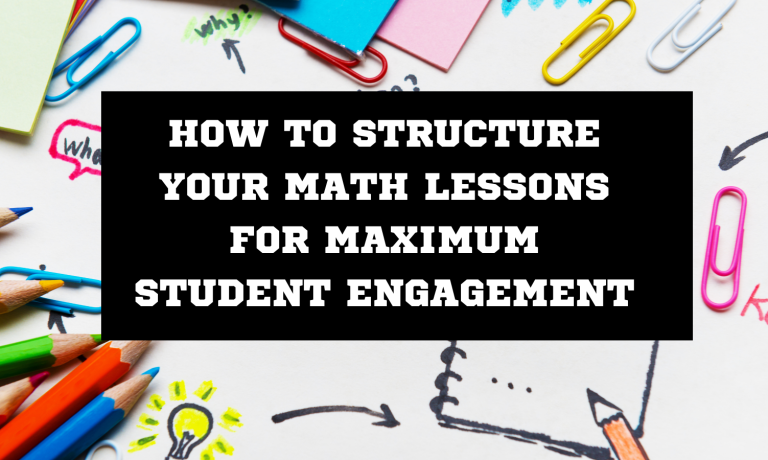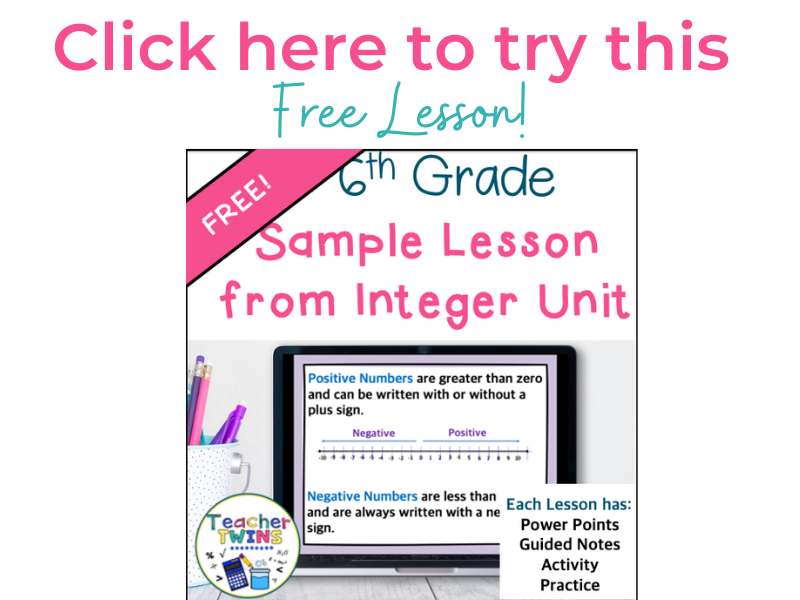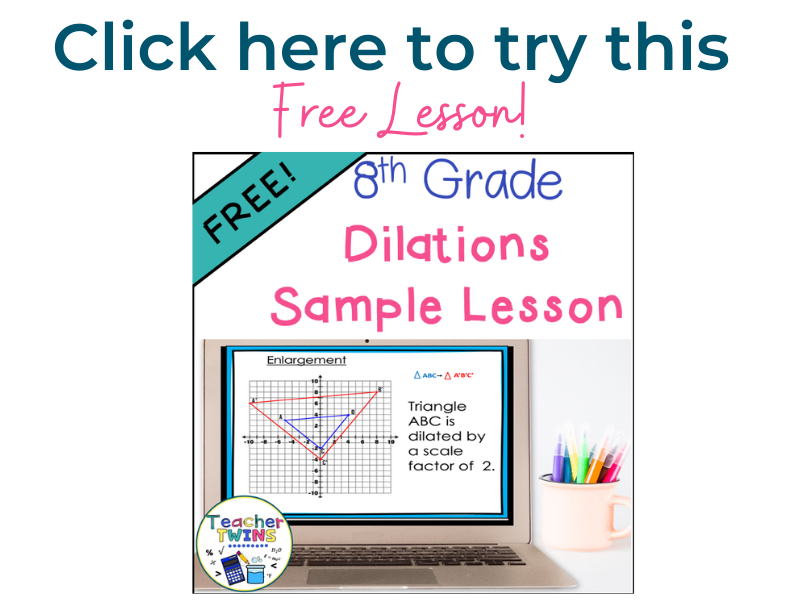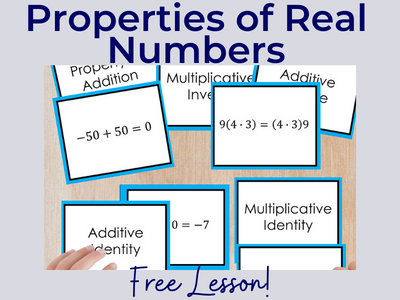Are your math lessons lacking the engagement and excitement you hoped for? Do you find your students drifting off or losing interest in the subject? Well, you’re not alone. Many educators struggle with finding the right structure to keep their math classes interesting and interactive. In this article, we will describe how to structure your math lessons for maximum student engagement.
The Importance of Structured Math Lessons
Structured math lessons are essential for creating an engaging learning experience for students. A well-organized lesson plan provides a clear roadmap for both the teacher and the students, ensuring that the objectives are met and the content is covered in a systematic manner. When students know what to expect and how the lesson will unfold, they are more likely to stay focused and engaged throughout the class.
A structured math lesson also allows for effective classroom management. By having a clear plan, you can set expectations and maintain a smooth flow of instruction, minimizing disruptions and maximizing learning time. Additionally, a structured lesson helps students build a sense of routine and familiarity, which can contribute to a positive learning environment.
Warm-Ups/Bellringers to Start Your Structured Math Lesson
A great way to start your math lesson is with a warm-up or bellringer activity. This short activity at the beginning of the class serves multiple purposes. It helps students transition into the math mindset, activates their prior knowledge, and sets the tone for the lesson.
The warm-up activity can be a quick review of previously learned concepts, a problem-solving exercise, or a thought-provoking question related to the upcoming lesson. Consider using visual aids, puzzles, or real-life scenarios to make the warm-up activity more interactive and interesting for your students.
Check out 5 Easy Ways to Incorporate Problem-Solving in Your Math Classroom for warm-up ideas.
Lesson Introduction
After the warm-up, it’s time to introduce the main topic or concept of the lesson. This is where you can grab your students’ attention and get them excited about what they are going to learn. Start by explaining the relevance of the topic and how it connects to their everyday lives. Use real-world examples, stories, or interesting facts to make the introduction more relatable and engaging.
To make the lesson introduction even more interactive, consider using multimedia resources such as videos, animations, or interactive presentations. These visual and auditory aids can help reinforce the key ideas and capture your students’ interest. Encourage participation by asking questions, inviting students to share their thoughts, or using interactive tools like online polling or classroom response systems.
Lesson Instruction
Once you have captured your students’ attention with a captivating introduction, it’s time to dive into the core content of the lesson. This is where you will teach the new concepts, demonstrate problem-solving strategies, and provide step-by-step instructions.
Direct instruction involves explaining the new concepts and providing clear explanations. Break down complex ideas into smaller, more manageable chunks and use visual aids, diagrams, or models to illustrate abstract concepts. Use real-life examples or relatable scenarios to make the content more meaningful and understandable for your students.
Practice New Skill
After the lesson instruction, it’s important to provide ample practice opportunities for students to reinforce their understanding and build fluency in the new skill or concept. This can be done through individual or group practice exercises, worksheets, or online interactive activities. Use a variety of problem types to cater to different learning styles and challenge students at various levels of proficiency. Guided practice allows students to apply the newly learned concepts under your supervision. Provide opportunities for them to practice solving problems, ask questions, and receive immediate feedback.

Class Activity
To further enhance student engagement and deepen their understanding, incorporate a class activity that allows for hands-on learning and collaborative problem-solving. This can be a scavenger hunt, task cards, a math game, a real-world application task, or a mathematical investigation. The activity should be relevant to the lesson objective and provide opportunities for students to apply their knowledge in a meaningful context.
Encourage creativity, critical thinking, and communication during the class activity. Allow students to explore different approaches, share their strategies, and discuss their findings. This not only fosters a deeper understanding of the concepts but also promotes teamwork, problem-solving skills, and mathematical reasoning.
Individual Practice
After the class activity, allocate some time for individual practice where students can work independently on practice exercises or assignments. This allows them to reinforce their understanding, practice problem-solving techniques, and build confidence in their math skills. Provide support and guidance as needed and encourage students to seek help or ask questions if they encounter difficulties.
Consider using technology tools or online platforms that offer personalized practice and adaptive learning features. These resources can provide targeted feedback, track students’ progress, and offer additional practice opportunities based on their individual needs. This personalized approach can greatly enhance student engagement and ensure that each student is challenged at their appropriate level.
Close the Math Lesson
As the lesson comes to an end, it’s important to provide closure and summarize the key concepts covered. Encourage students to reflect on their learning, ask questions, and make connections to real-life situations.
Consider ending the lesson with a formative assessment or exit ticket to gauge students’ understanding and provide feedback for future instruction. This can be a short quiz, a reflection journal, or a class discussion where students share their thoughts and insights. Use this feedback to inform your teaching and adapt your instruction to better meet the needs of your students.

The Importance of Time Management in Your Lesson
Time management is an important part of structuring a math lesson for maximum student engagement. As you are planning your lesson make sure you estimate how long each activity will take. It is easy to get distracted during a lesson. Make sure you keep the lesson moving. Pay attention to when students finish. You want most students to finish the assignment or activity in class but realistically some students will not. It is important to let students finish the assignment, but you do not want most of the class waiting on a few students. You may want to give them the opportunity to finish the assignment at home or you may have a Catch up/Enrichment Day on Fridays. Be flexible. If you see that most of the class needs more time on an assignment, you may need to shorten it or have the lesson continue the next day.
Conclusion: Creating a Structured Math Lesson Plan for Maximum Student Engagement
In conclusion, structuring your math lessons is crucial for maximizing student engagement and creating a positive learning environment. By incorporating warm-ups, captivating introductions, interactive instruction, ample practice opportunities, class activities, and individual practice sessions, you can make math come alive and foster a love for the subject among your students.
Remember to use a variety of teaching methods, hands-on activities, and real-world examples to make the content relatable and meaningful. Encourage active participation, collaboration, and critical thinking to enhance student engagement and deepen their understanding. Keep the lesson moving but be flexible and adjust the lesson pacing as needed. By following these practical tips and strategies, you can transform your math lessons into dynamic and engaging experiences that inspire your students to excel in mathematics. Let’s make math a subject your students look forward to each day!
Check out these free lessons to help you start creating structured math lessons for maximum student engagement!






